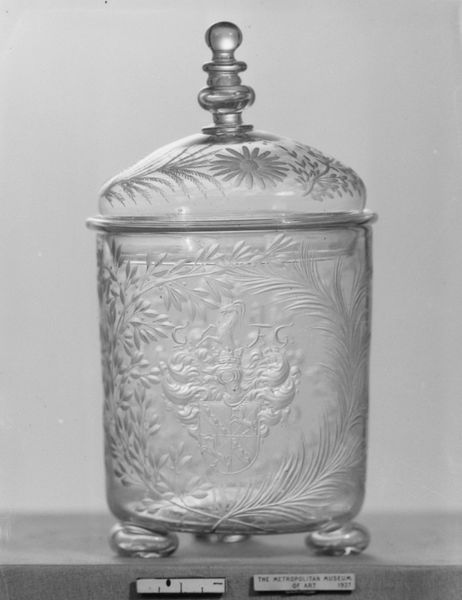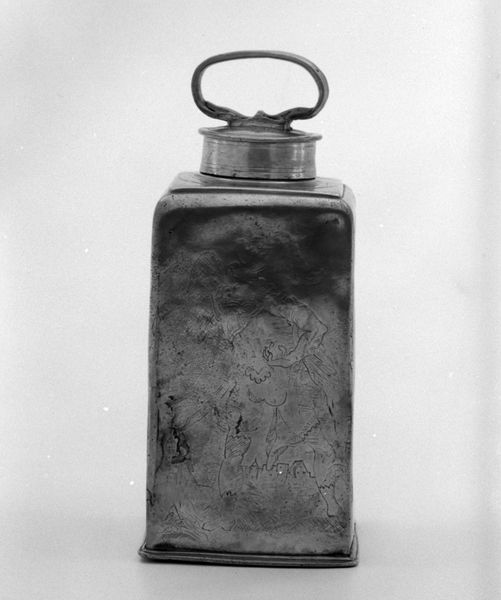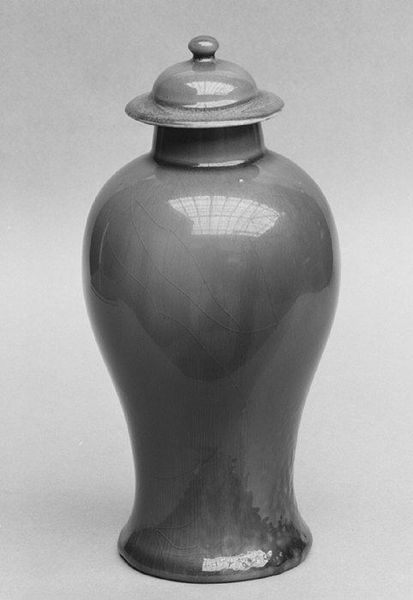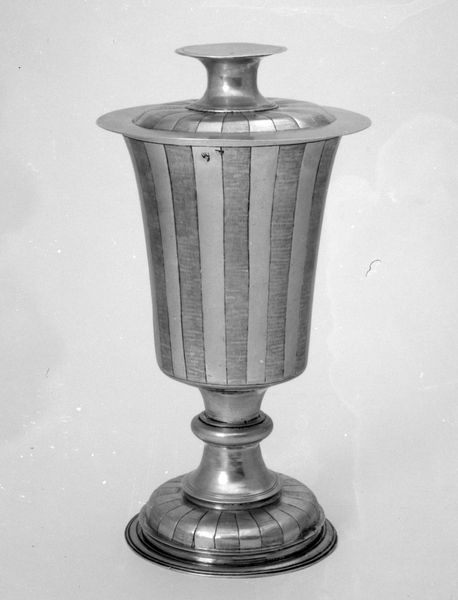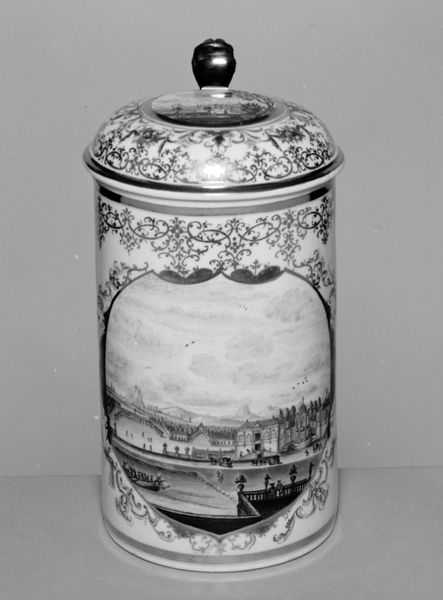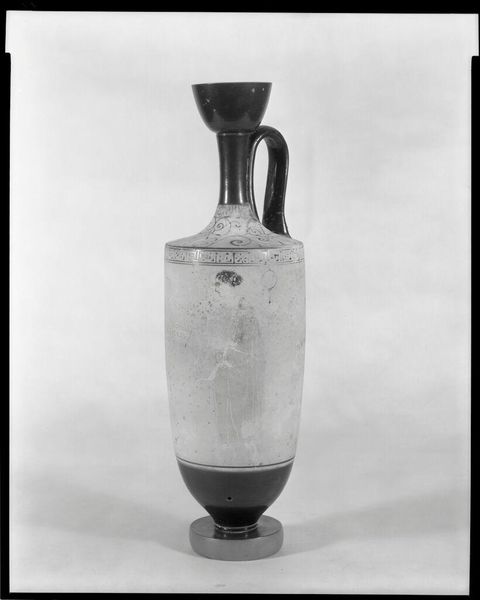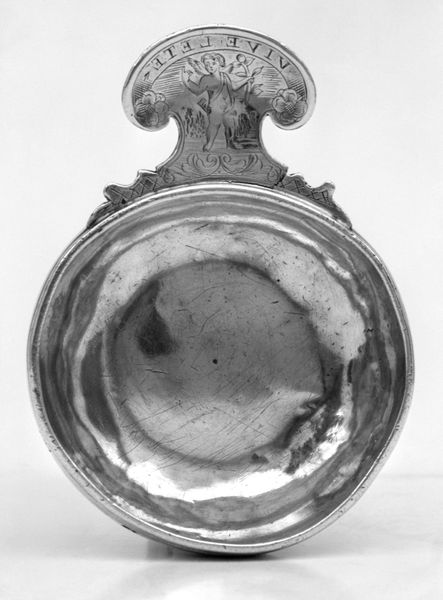
Dimensions: Overall: 14 1/8 × 6 1/4 in. (35.9 × 15.9 cm)
Copyright: Public Domain
Editor: This is the "Wine Can," made around 1780, currently held at The Metropolitan Museum of Art. It's made of metal, so it is actually a small sculpture, which gives the object this austere but grand presence. How would you interpret this work, especially thinking about its blend of geometric shape and delicate decoration? Curator: It’s fascinating to consider the symbolism embedded within this object. The geometric shape is certainly deliberate, and creates visual order. But consider the floral motifs, delicately etched onto the surface. What kind of emotional response do these differing styles generate? Editor: I suppose the floral designs soften the geometric form. The floral shapes remind me of traditional folk art, which could point to deeper, maybe celebratory themes related to wine. Is it unusual to see floral decoration paired with geometry? Curator: Not necessarily, especially within decorative arts of the Baroque and Rococo periods. The interplay of organic and geometric shapes often represented the imposition of order onto the natural world, a popular theme during the Enlightenment. And consider how this visual push-and-pull plays into the can’s function, as an object related to domestic celebration. Editor: That tension between order and celebration, reason and ritual is starting to emerge! The can does have an air of dignity that transcends just being a receptacle. What did this say about the culture producing and using objects such as this? Curator: Indeed. Every element—the geometric form, the delicate floral work—contributes to a story of control, luxury, and cultural refinement. Remember, even seemingly functional objects are often repositories of deep cultural values, social identities, and aspirational imagery. What else can we learn about ourselves by appreciating our objects? Editor: Thinking about it as a blend of both a beautiful sculpture and an everyday tool really puts the period in perspective! Curator: Exactly. Material culture is often about how utility and culture come together, isn't it?
Comments
No comments
Be the first to comment and join the conversation on the ultimate creative platform.

